
Harmony, also known as Node 2, is the "utility hub" of the International Space Station. It connects the laboratory modules of the United States, Europe and Japan, as well as providing electrical power and electronic data. Sleeping cabins for four of the crew are housed here.
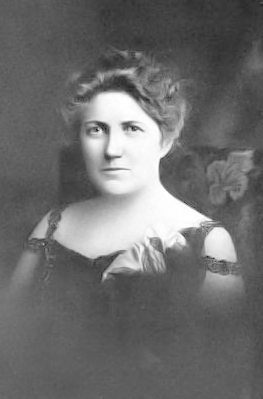
Cynthia May Westover Alden, also known as Cynthia W. Alden and Cynthia M. Westover, was an American journalist, author, inventor, and New York City municipal employee.
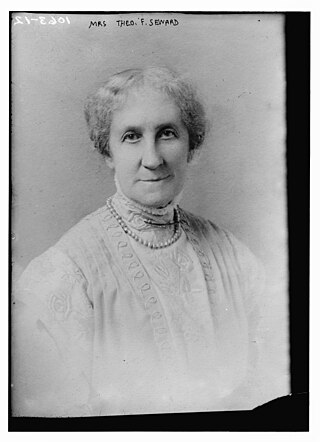
Mary Holden Coggeshall Seward, commonly known as Mary C. Seward, was an American poet, composer, and prominent parliamentarian serving humanitarian and woman's club movements of the late nineteenth and early twentieth centuries. A number of her works were published under the pseudonym "Agnes Burney" , including several developed in collaboration with her spouse, Theodore F. Seward, an internationally known composer and music educator in his day. She became a groundbreaking advocate for the care and education of blind babies and young children during her later years, serving as president of the department for the blind of the International Sunshine Society (I.S.S.).
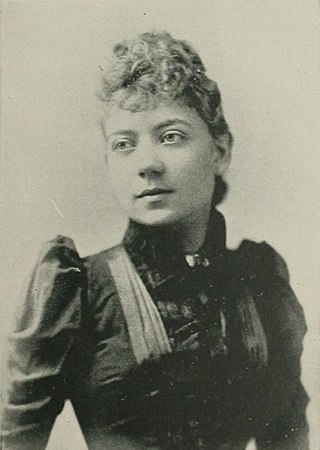
Ruth Ward Kahn was a Jewish American lecturer and writer. In addition to being the author of novel, The Story of Judith (novel), The First Quarter, and "Gertrude", she was a contributor to Woman's Home Companion, Arena, Popular Science, and other publications. She was a member of the Incorporated Society of Authors of London, as well as the Woman's National Press Association, of which she served as the vice-president for its Colorado branch. Kahn's travels took her to Bermuda, Mexico, Hawaii, and the South Sea Islands; she lectured in 20 states.
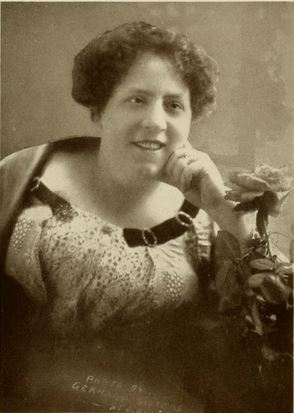
Clara Estella Zeiss Baumhoff was the founder of the Missouri Division of the International Sunshine Society (ISS); in fourteen years of leadership brought more than twenty-five thousand members into the ISS through her press departments on Sunshine, and by her personal efforts.

Marion Howard Brazier was an American journalist, editor, author, and clubwoman of Boston. She was the author of: Perpetrations, a Book of Humor, and Cheer, Philosophy and Comfort.

Mary Gray Peck was an American journalist, educator, suffragist, and clubwoman. She was interested in economic and industrial problems of women, and investigated labor conditions in Europe and the United States. Born in New York, she studied at Elmira College, University of Minnesota, and University of Cambridge before becoming an Assistant Professor of English at the University of Minnesota. Later, she became associated with the General Federation of Women's Clubs, College Equal Suffrage League, National American Woman Suffrage Association, Women's Trade Union League, Woman Suffrage Party, and the Modern Language Association. Peck was a delegate at the Sixth Conference of the International Woman Suffrage Alliance in Stockholm, 1911.
Emily Gillmore Alden was an American author and educator. For forty years, Alden was a member of the faculty of Monticello Seminary, and for nearly fifty years, the poet of the school. Alden wrote the commencement day poems for Monticello every year since she entered the institution. Harriet Newell Haskell : a span of sunshine gold was published in 1908 and Poems by Emily Gillmore Alden was published in 1909.

Laura Gregg Cannon was an American lecturer and organizer in the women's suffrage movement. Over the course of almost three decades, she led or supported suffrage activities in fifteen different states. She was a Life Member of the National American Woman Suffrage Association (NAWSA). Cannon edited a suffrage publication and wrote on labor issues. She was a national speaker for the Socialist Party.

Margaret McDonald Bottome was an American reformer, organizational founder, and author. She was engaged in religious work in Brooklyn, and for more than a quarter of a century, she gave Bible talks to the society women of New York City. Out of these experiences grew the order of the King's Daughters, which she founded and for which she was annually chosen president until her death. She was the author of several books, and made a large number of contributions to religious magazines.
Delia Lyman Porter was an American author, social reformer, and clubwoman. She was a prominent civic worker, associated with the prohibition and the parent–teacher association movements. Porter published books, calendars, short stories, compilations, articles, and religious outlines.

Beatrice Gjertsen Bessesen was an American operatic soprano. She was the president of the Twin City Music and Dramatic Club. Bessesen sang with the St. Olaf Choir and toured with it in Norway. She made successful concert tours in the U.S. and Europe, appearing with various European opera companies. She sang in practically all the leading centers of Europe, and was the prima donna in many big operas. She was a strong factor in developing cultural and artistic appreciation among Norwegian Minnesotans. She is the namesake of the Bessesen Building, which is on the National Register of Historic Places listings in Minnesota.

Cynthia Morgan St. John was an American Wordsworthian, book collector, and author. In her day, she owned the largest and most valuable Wordsworth library in the U.S. she was engaged in collecting books for 40 years.

Lisa Anne Fletcher was an American poet and letter writer. She was widely known as artist, poet and correspondent. She was incapacitated for nearly 40 years by the lasting effects of malignant diphtheria, and during most of that period was bedridden, becoming a member of the Shut-in Society in 1878.
Shut-in Society was an international non-denominational social service organization working through established channels to unite the sick and well through letter writing. The idea originated with Jennie Drinkwater in 1877 who sought to foster cheer and comfort to those who were chronically incapacitated. Originally regarded as "an organization without organization", in 1884, it organized in New York City and incorporated the following year. By 1902, the work had expanded with 102 wheelchairs in use by members of the society, and hundreds of distributed books, magazines, and newspapers. By 1958, the Shut-in Society was located in 40 states, Canada, England, and Australia.

Mary Catherine Judd was an American educator, author of children's literature, and active worker for world peace. Born in New York state, she lived for many years in Minnesota, and in later life, in southern California.

Amy Robbins Ware was an American author, world court worker, peace activist, and clubwoman. During World War I, she served in various capacities for the American Red Cross and the American Expeditionary Forces in France. As a member of the Red Cross, she saw duty in a canteen near the frontlines in the days of the last drive just before the armistice of 11 November 1918 was signed. She was also connected with the army college at Savenay. Ware wrote of her war experience, in prose and verse, in Echoes of France (1920). In 1925, as chair of the department of international cooperation for the Minnesota Federation of Women's Clubs, Ware set in motion the efforts of 50,000 club women of the state to consider the question of international cooperation, her hope being that women may keep informed as to the rapidly changing conditions of the world and be ready to lend aid to further the kind of international cooperation that will bring about permanent world peace.

Martha B. O'Donnell was an American temperance activist associated with the International Organisation of Good Templars (I.O.G.T.), where she served as International Superintendent of Juvenile Work. She was also a newspaper and magazine editor, working simultaneously on two publications. A pioneer suffragist, she knew and worked with Elizabeth Cady Stanton and Susan B. Anthony.
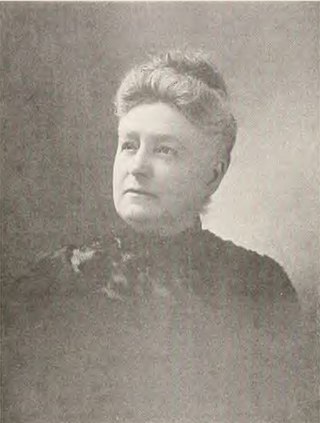
L. Isabel Heald was an American social leader and philanthropic worker. Active in charitable and club work in the State of Maine, she belonged at one time to 14 organizations. Heald served as president of the Maine division of the International Sunshine Society (ISS).



















